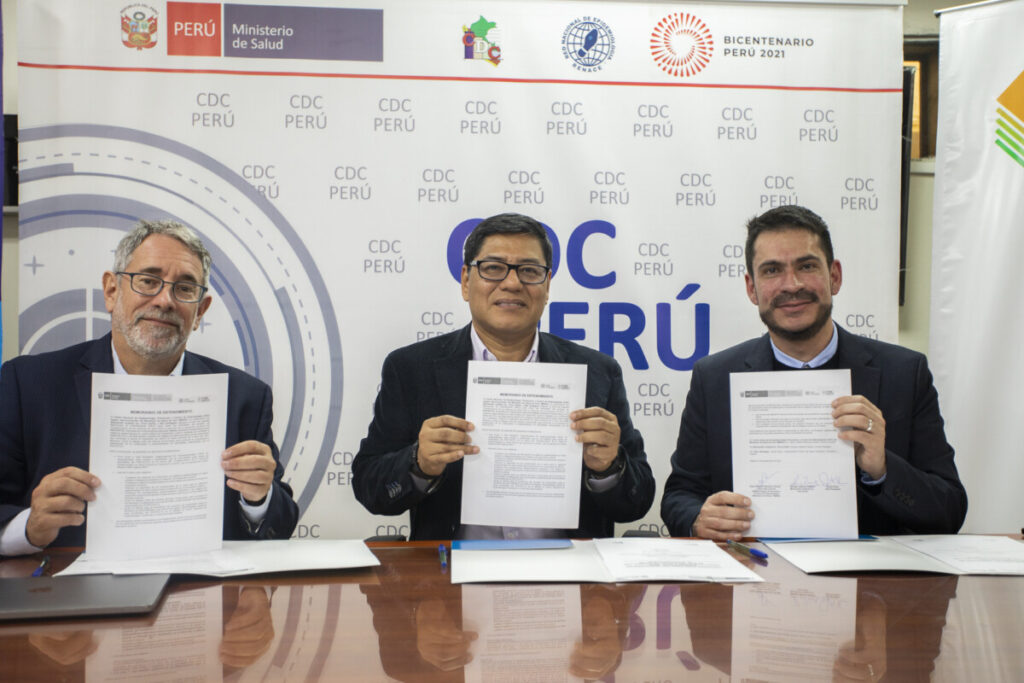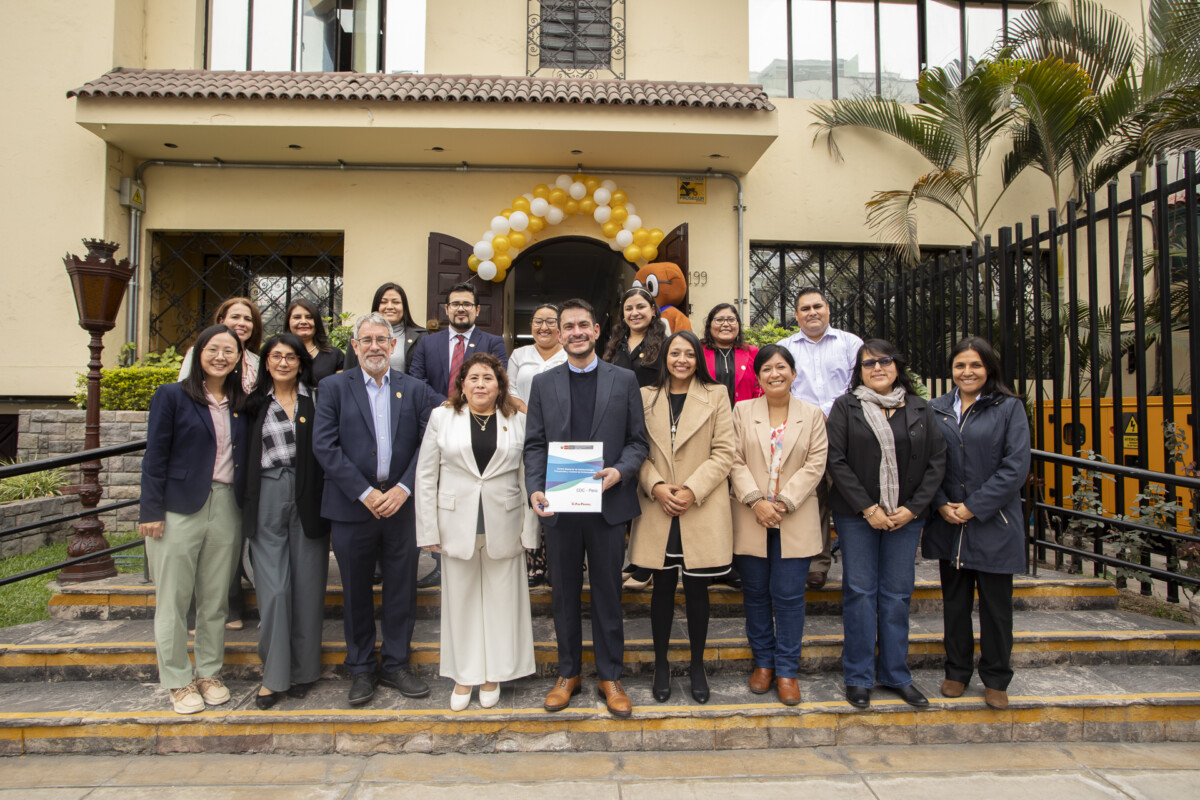October 2023. Lima, Peru. The National Center for Epidemiology, Prevention and Disease Control (CDC Peru) of the Ministry of Health (Minsa) joins Pure Earth and Vital Strategies in a joint effort to strengthen epidemiological surveillance of lead exposure in Peru. By signing a “Memorandum of Understanding” on September 22 in Lima, these three entities seek to strengthen information systems, train health professionals, and generate evidence for public policies. This collaboration represents an important step towards preventing lead exposure in children and improving public health in Peru as part of the Strengthening Health Systems to Reduce Lead Exposure project.
Since 2018, CDC Peru has taken steps to strengthen public health epidemiological surveillance of risk factors for lead exposure. In this context, the Technical Unit of Epidemiological Surveillance of Environmental Risk of the CDC has considered the need to continue strengthening epidemiological surveillance for lead exposure with an inter-institutional and inter-sectoral approach to address surveillance and response at the level of the regions for equipment and strengthen competencies in a comprehensive manner.

Dan Kass, Dan Kass, Senior Vice President of Environmental, Climate and Urban Health of Vital Strategies; Dr. Cesar Munayco Escate, General Director of the National Center for Epidemiology, Disease Prevention and Control of Peru’s Ministry of Health; and Rodrigo Velarde, Country Director of Pure Earth Peru sign the agreement to strengthen epidemiological surveillance of lead exposure in Peru.
This Memorandum of Understanding proposes the following objectives:
• Strengthen public health epidemiological surveillance and health intelligence information systems in relation to lead exposure.
• Strengthen public health epidemiological surveillance of risk factors for lead exposure.
• Strengthen the capacity of health professionals for epidemiological surveillance in public health for the prevention of lead exposure.
• Strengthen epidemiological research applied to lead exposure risks in order to generate evidence that contributes to the formulation of public policies.
• Initiate dialogue between the technical offices involved to promote coordination and collaboration in the continuity and implementation of activities related to epidemiological surveillance for lead exposure, and then sign a new cooperation agreement.
“At Pure Earth we collaborate with the national government, communities, industry leaders and specialized agencies to identify and apply solutions that stop exposure to toxic contaminants, protect health and restore the environment. Lead exposure is a far greater threat to children’s health than previously thought. We are committed and ready with all our capabilities to address lead contamination in Peruvian children, supporting our communities to have a future free of contamination,” says Rodrigo Velarde, Country Manager of Pure Earth Peru.
In this way, this document represents a fundamental step forward and will promote important advances in the prevention of children with lead exposure and strengthen epidemiological surveillance in public health in Peru.
Strategic Alliance to Prevent Lead Exposure
Protecting children from lead exposure is important for their lifelong health. There is no safe level of lead in children’s blood. Even low levels of blood lead have been shown to affect learning, attention span, and academic performance. To avoid further exposure and reduce damage to your children’s health. The most important step parents and caregivers, health care professionals, and public health professionals can take is to prevent lead exposure before it occurs.
“People can be exposed to lead from contaminated soil, adulterated foods, cookware, paint and smelting operations, yet many countries lack the technical capacity to collect, analyze and use childhood lead data to identify their leading sources of exposure. We look forward to this opportunity to strengthen our active partnership with Pure Earth, and we will build upon our work with governments to establish systems of monitoring blood lead levels in children, including helping to develop clinical guidelines and national environmental health monitoring plans,” said Dan Kass, Senior Vice President, Environmental, Climate and Urban Health, Vital Strategies.
A Global Initiative
Currently, 1 in 3 children have enough lead in their blood to cause permanent brain damage. These actions are part of a broader Pure Earth initiative to strengthen the knowledge of national health systems to prevent, identify, and treat lead exposure in 5 countries. An estimated 292 million of these children with high lead levels live in Colombia, India (Maharashtra), Indonesia, Kyrgyzstan, and Peru. Pure Earth’s 5-year global project will help these 5 countries overcome key technical and clinical barriers to effectively identify, treat, and prevent childhood lead exposure, and implement effective national measures to monitor and reduce the risks of lead exposure.
Learn more about each project in Colombia, Indonesia, Kyrgyzstan, and Maharashtra, India.
Pure Earth Global Presence
Pure Earth prioritizes local knowledge and solutions. Pure Earth is working to address lead poisoning in these focal countries under the Global Lead Program: Bangladesh, Colombia, Georgia, Ghana, India, Indonesia, Kyrgyzstan, Mexico, Peru, and the Philippines.
Priority countries on a “watch list” due to high levels of lead poisoning are Zambia, Zimbabwe, Egypt, Pakistan, and Nigeria. These remain a priority for program expansion if and when additional resources are secured.
Pure Earth Is A Global Leader In Addressing Lead Poisoning, Reducing Children’s Exposures
Pure Earth has been acknowledged as a leading organization addressing global childhood lead poisoning. In their Global Lead Exposure report, think tank Rethink Priorities evaluated the impact of Pure Earth’s work and confirmed the effectiveness of our approach and programs.
Global Lead Program: Pure Earth’s 5-Phase Approach to Solving Lead Poisoning
Our goal is to measurably and sustainably reduce lead pollution and poisoning where we work and to encourage and enable increased action by other stakeholders in the global health and development sphere.
Pure Earth’s Global Lead Program strategy is designed around a framework consisting of five core elements that apply in all countries. This 5-phase approach was informed by our years of experience implementing over 50 projects in multiple countries to mitigate lead exposure.
- Health Surveillance: Conduct baseline blood lead level (BLL) testing and analysis to understand prevalence, severity and location of exposure.
- Source Analyses: Measure likely sources in homes where people have elevated lead levels, to determine the most significant sources of exposure.
- Source-specific Interventions: Design and implement a range of interventions to reduce exposures and the use or release of lead in products and industrial processes.
- Communications: Disseminate findings and recommendations to inform and build support with governments and funders for action.
- Institutional Strengthening: Enhance the capabilities of government institutions to plan, implement, and sustain effective public health programs to reduce lead poisoning.
Learn More
Strengthening Health Systems to Reduce Lead Exposure Project
Pure Earth and UNICEF’s The Toxic Truth Report: https://www.unicef.org/reports/toxic-truth-childrensexposure-to-lead-pollution-2020
Pure Earth’s Global Lead Program: https://www.pureearth.org/our-projects/global-lead-program/

